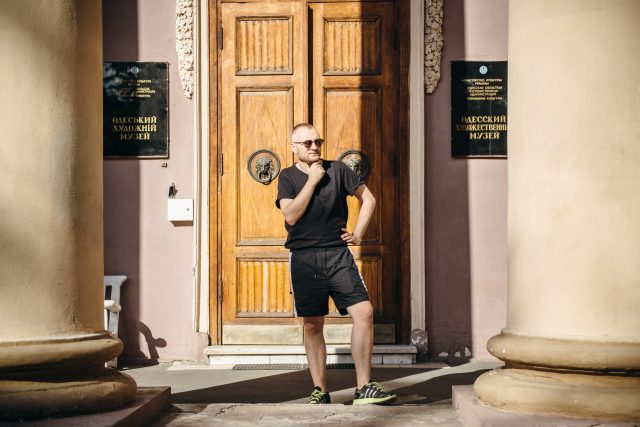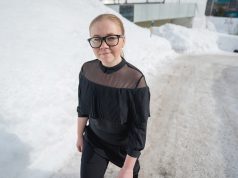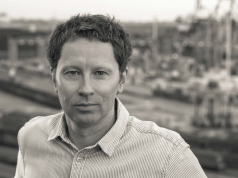The Fine Arts Museum is a very important place for me, as it must be for any artist. If I have a free hour then I’ll go to Sofievskaya Street. It is an old and untouched part of Odessa. I would even say that I prefer the Sofievskaya street area as a whole, not just one part. It speaks to something very close to me. It is such a remote part of the center that descends down from the Peresypsky Bridge, to some working class areas. Sofievskaya in general is a very picturesque street but it also holds a concentration of such interesting places such as a morgue, an infectious diseases hospital and an art museum. I think it is generally the most “Odessa” part of the city. And so when there is free time, I don’t always want to go somewhere in the very center, I much prefer to visit Sofievskaya street, where it’s much quieter, and the atmosphere gives you a chance to think. Images of Babel and Jabotinsky come to mind immediately.
For me, the image of Odessa is also that of the Moldavanka: that of Bolgarskaya street and the surrounding area. So the Odessa myth in these streets is still partly present. It is alive to some extent in many places, if also, of course, transformed. People wear different clothes, they speak in a slightly different language, but nevertheless, after 8 pm, when you’re passing the night Privoz Market, there one can feel this trashy — in a good way — atmosphere … Parallel to this street there is Bogdan Khmelnitsky Street, Zaporozhskaya Street and a bit further up there is the Jewish Hospital. If I have any guests visiting me, I will typically show them this route. It is not a touristy part of Odessa and it’s nice to spend evenings there.
When I was a child and read the literature program for school (it included Babel and so on) I somehow treated this area as if it was something foreign. The ambiance seemed to be too provincial and whirlwind. And then, when I was visiting a friend in Amsterdam, I read Babel’s “Odessa stories” once again. Then I returned to Odessa, it was the end of May and it was very hot. And I somehow accidentally got on Sofievskaya Street and I realized that this area is closer to me. So this feeling toward the neighborhood did not come right away, only about five years ago. Apparently, it was necessary to see it from another side and so to begin longing for it.
There is also the Odessa “Starokonka” Flea Market. Of course, it is always expanding exponentially, and over the recent years almost all the nearby streets have become busier and busier. I often go there. For me, the main goal is to find vintage vinyl, which is a tool of my trade. Every so often I buy old Soviet records for music and DJing. I go purposefully looking for old records and I usually return home with a “catch” of at least five records.
It seems to me that such places are always dying out. It is difficult to see these spaces when new buildings are being constructed around them and it seems that their spirit has changed. But, all the same, something else lives on and it seems to me that it will still remain in some measure. These places are very influential for my art and they bring a streak of nostalgia to it. Everything seems very global sometimes, but the fact is that I was born in Odessa, and it is impossible to leave it behind. Odessa is such a tremendous city, with its layering of cultures, and it can be said that I’m always drawing it in my mind, this vision of Odessa. That vision may not always correspond to what really exists, but I’m somehow still trying to imagine that image.




































